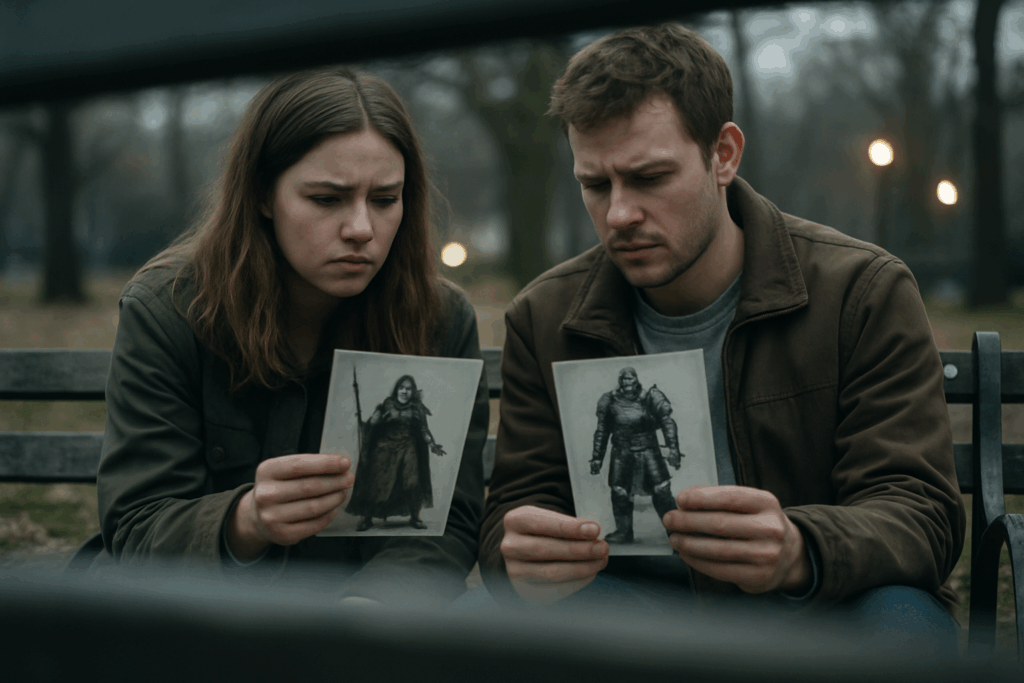Setting the Stage: Two Titans, One Genre
Released within months of each other, Baldur’s Gate 3 and Starfield landed like twin meteorites in the RPG world. One is a dense, tactical dive into classic fantasy, the other a massive open ended journey through the stars. Both speak to different corners of the genre, yet share the same ambition: to let players shape their stories with real consequence.
Baldur’s Gate 3 sticks to its roots, leaning on deep turn based mechanics, roleplay heavy dialogue, and a world driven by Dungeons & Dragons logic. It’s intimate, methodical, and character first. Starfield, by contrast, aims for scale. Planets, ships, exploration everything is wide and sprawling. Dialogue systems and moral questions are still there, but they serve a much larger canvas.
What connects them is intent: these are games that put the player at the center of the universe, whether that universe is Faerûn or Alpha Centauri. They raise the bar for immersion, narrative choice, and for what games can ask of their audiences. Not just play but immerse. Not just act but decide.
Narrative Depth & Player Choice
In Baldur’s Gate 3, player agency isn’t just a buzzword it’s in the bones of the game. Every dialogue tree branches with care, heavily influenced by your character’s background, race, and class, just like in a proper D&D campaign. Decisions ripple across your journey with weight. Betray a companion early on, and don’t be surprised if it haunts you five acts later. Many NPCs don’t just remember they react, hold grudges, or change their priorities based on your smallest moves. It’s a storytelling system that demands attention and rewards immersion.
Starfield aims for something broader. Its narrative spans star systems, factions, ideologies, and moral gray zones. On paper, it’s ambitious. You’re pulled into big picture decisions that shape galactic politics, but the execution sometimes feels thinner. Side quests can blend together, dialogue options might feel cosmetic, and the impact of your choices isn’t always clear. You feel powerful, but less personally connected.
Put simply: Baldur’s Gate 3 keeps it close to the chest tight, emotional, reactive. Starfield goes wide, massive in scope, but spread a little thin. If storytelling is food, BG3 offers a rich, slow cooked meal. Starfield’s a buffet with more on your plate, but fewer standouts per bite.
Combat & Gameplay Mechanics

Baldur’s Gate 3 leans hard into tactical turn based combat. You plan every move like a chess match, where positioning, environmental hazards, and clever spell use mean the difference between domination and disaster. It’s built for players who enjoy slow, deliberate strategy and the high stakes of a dice roll. Every turn counts, and a well timed combo can flip the board.
Starfield, on the other hand, is all about fluid, real time action. You’ll sneak, shoot, jetpack, and sometimes float through zero gravity gunfights. It’s more shooter than traditional RPG when it comes to gameplay. The systems are lighter on deep mechanics, but the variety especially in how you customize your loadouts and playstyles keeps it feeling fresh and kinetic.
Bottom line: if you crave precision and planning, BG3 is your playground. If you want fast, open ended combat with room to improvise, then Starfield has you covered.
Visual Design and Worldbuilding
Starfield shoots for scale and mostly sticks the landing. From neon soaked mega cities to icy deadworlds, each environment is a different tone in a space opera palette. Modular ship customization adds flavor, while space stations and planetary outposts paint a believable future. But the tradeoff? Procedural generation can leave some planets feeling hollow, like ideas sketched but not fully colored in.
Baldur’s Gate 3 goes the opposite way. Its world may be smaller, but it’s alive in every inch. Dense forest groves, haunted ruins, blood slick altars all handcrafted and dripping with intent. The visual language reinforces the themes: this is a place of consequence and history.
Big vs. rich, expansive vs. curated. One invites you to roam, the other dares you to stay and look closer.
For more on how each game uses art direction to build immersion, check out Art Direction and Player Immersion.
Replayability and Mod Support
Baldur’s Gate 3 is replayability done right. Each origin character comes with unique backstories that shift dialogue, relationships, and even major plot turns. Want to play a self absorbed vampire one round and a reluctant savior the next? You can and the game responds in kind. Custom builds also open up a wide range of tactical playstyles, from chaotic wizards to stealthy rogues. Add in the sheer weight of choices that genuinely reshape the world, and you get a game that begs for second, third, and fourth runs.
Starfield, on the other hand, leans into longevity through modding. It’s a Bethesda staple: release a massive game, then let the community sculpt it into whatever they want over the years. From quality of life tweaks to complete overhauls, modders are already turning vanilla Starfield into something far richer. While the core game offers hundreds of hours, the modding potential stretches it into the thousands. In short, BG3 is replayable because of what it has built in. Starfield is because of what its players will build next.
Final Verdict
Baldur’s Gate 3 isn’t just a game it’s a return to form. It delivers a tightly woven, character driven experience with real consequences and expressive freedom. Its roots in Dungeons & Dragons show. Conversations matter. Backgrounds matter. Choices echo. It’s the kind of RPG that rewards slow thinking and emotional investment. If you want to feel like your character impacts the world in deep, personal ways, BG3 gives you the tools.
Starfield, by contrast, is a playground the size of a galaxy. The freedom is staggering: build your ship, bounce between planets, join factions, ignore the main story entirely. It’s not as emotionally sharp as BG3, and some of the content blurs together, but the scale and ambition are hard to ignore. It’s a space odyssey that favors curiosity over tight storytelling.
In 2026, both titles still carry weight and replay value. BG3 remains the benchmark for narrative rich, tactical RPGs. Starfield holds strong as a sandbox for sci fi dreamers. Your pick depends on what you’re chasing: meaningful die roll drama or the cold thrill of a jetpack under the stars.
